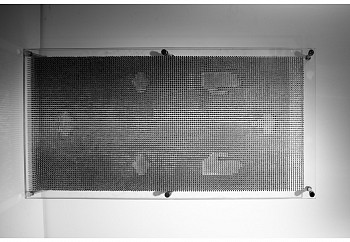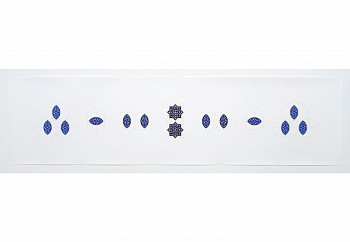Artissima 2014
Athr Gallery is proud to be taking part for the third year in the 2014 edition of Artissima International Contemporary Art Fair. Taking place at Oval Lingotto Fiere in Torino, the fair is characterised by its commitment to both commercial and more experimental presentations. In turn, Athr Gallery is committed to supporting cross-cultural dialogue and cultivating discourse towards defining a collective voice for contemporary art coming from the Middle East, and Saudi Arabia in particular. As one of the only galleries from the region to be involved in Artissima, the artists selected are representative of the diversity of work coming from the Middle East. As a collection, the Athr Gallery presentation touches on a range of subject matter and a variety of mediums, from photography and print to sculpture and appropriated matter. They are brought together by their shared preoccupations, concepts born of a time of rapid change, development and conflict. They also present a common contemplation on the interpretation of Islamic culture and ritual in the modern world, with works that look as much to Saudi’s recent history, as to the threads of early tradition and heritage innate to the visual language of Islamic art.
Saudi artist Ahmed Mater shows an iconic work, Evolution of Man (2010) – a petrol pump transforms to a man holding a gun to his head across the space of 5 silkscreen prints – here Mater questions to rapid social evolution of Saudi since the discovery of oil in 1938.
Hazem Harb is a Palestinian artist currently living between Italy and the UAE. Presented at Artissima is a recent sculptural work, We Used to Fly on Water (2014), part of his Invisible Travels series, a response to conditions of living in the Gaza Strip, where tunnels linking the area to Egypt are not only commonplace, paved with danger and uncertainty, but also essential and desperate measures against the inhumane isolation of a people.
Also Palestinian, Ayman Yossri Daydban’s work looks towards the fragmented identity of his people and his own sense of loss, appropriating commonly found materials that are regionally specific such as prayer carpets and surveillance cameras.
Recent works by Musaed Al Hulis, using found material, comment on corruption and ideological distortion within social infrastructures in Saudi Arabia.
Dana Awartani’s Progressional Drawings, take the concept of Tawhid, the Islamic teaching of the Oneness of God, taking a circle as her starting point she uses geometry as a means to reflect our understanding of the universe.
Seçkin Pirim exhibits sculptures and works on paper that examine our understanding of singularity. The works are composed of layers of sterile and simplified abstract forms, removed from any natural or organic references, they become reliant on the chain relationship between one basic modular unit linked to another, questioning notions of singularity.






